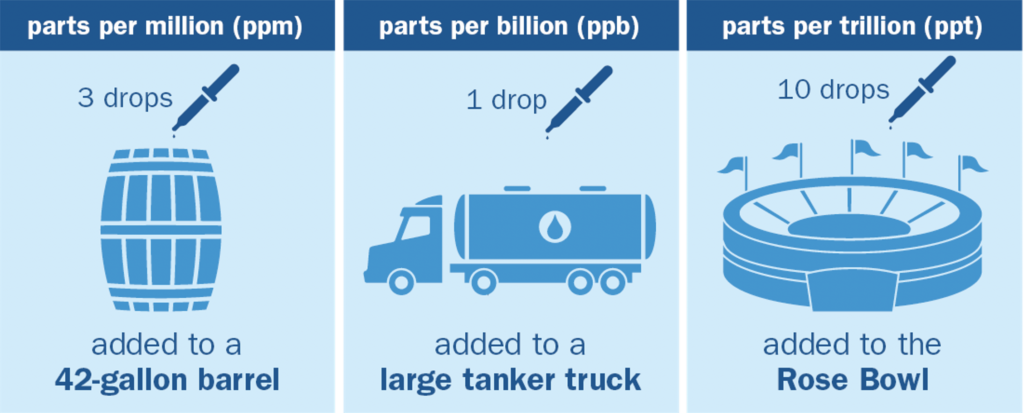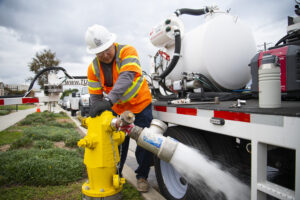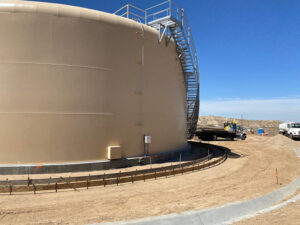We Invest Over $1 Billion Annually in California’s Water Infrastructure
The primary goal of California’s regulated water utilities is to provide customers with safe, high-quality, and reliable water service.
To accomplish this, California’s largest CPUC-regulated water utilities collectively invest over $1 billion annually to maintain and replace aging infrastructure to keep the water flowing.
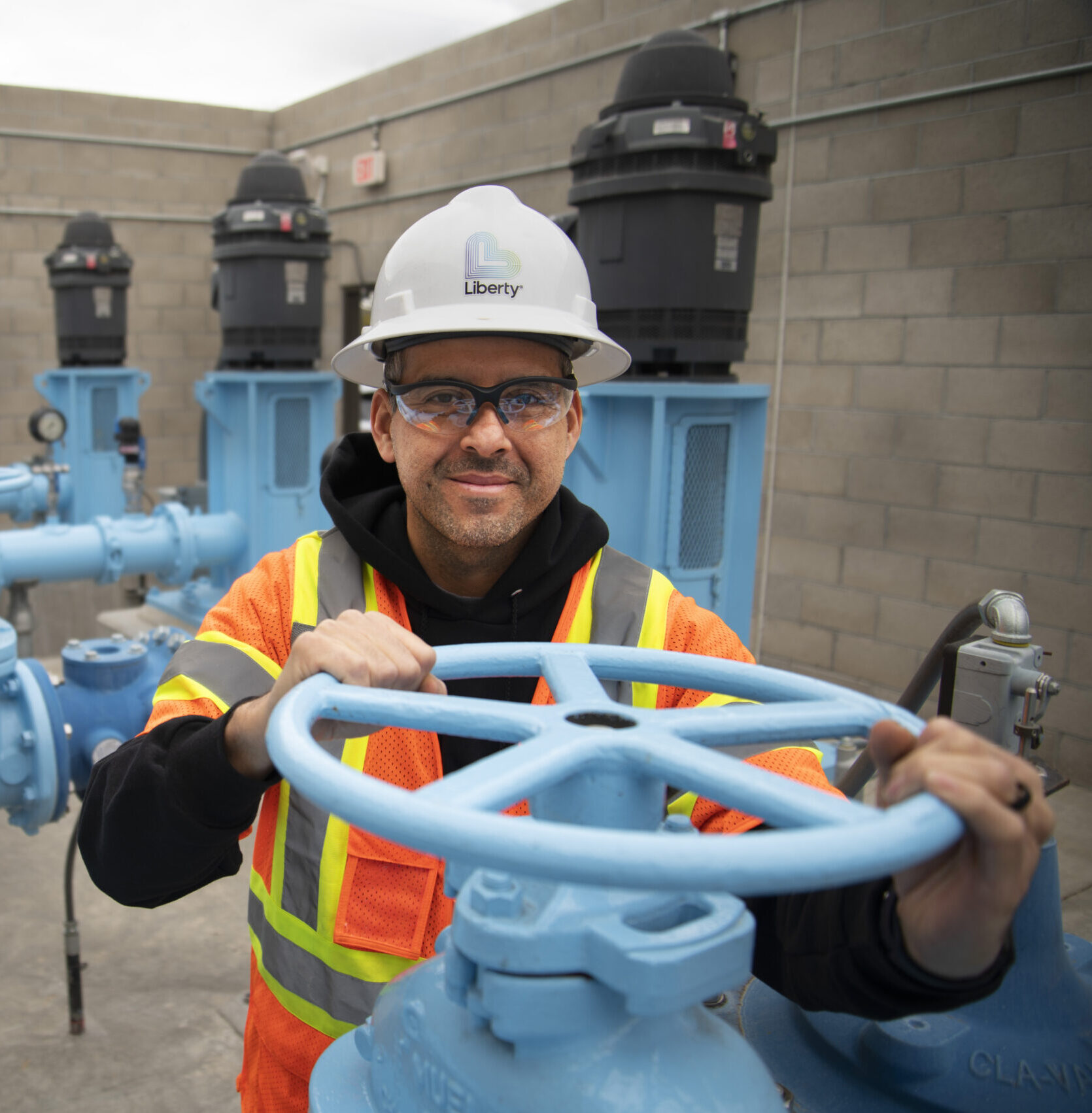
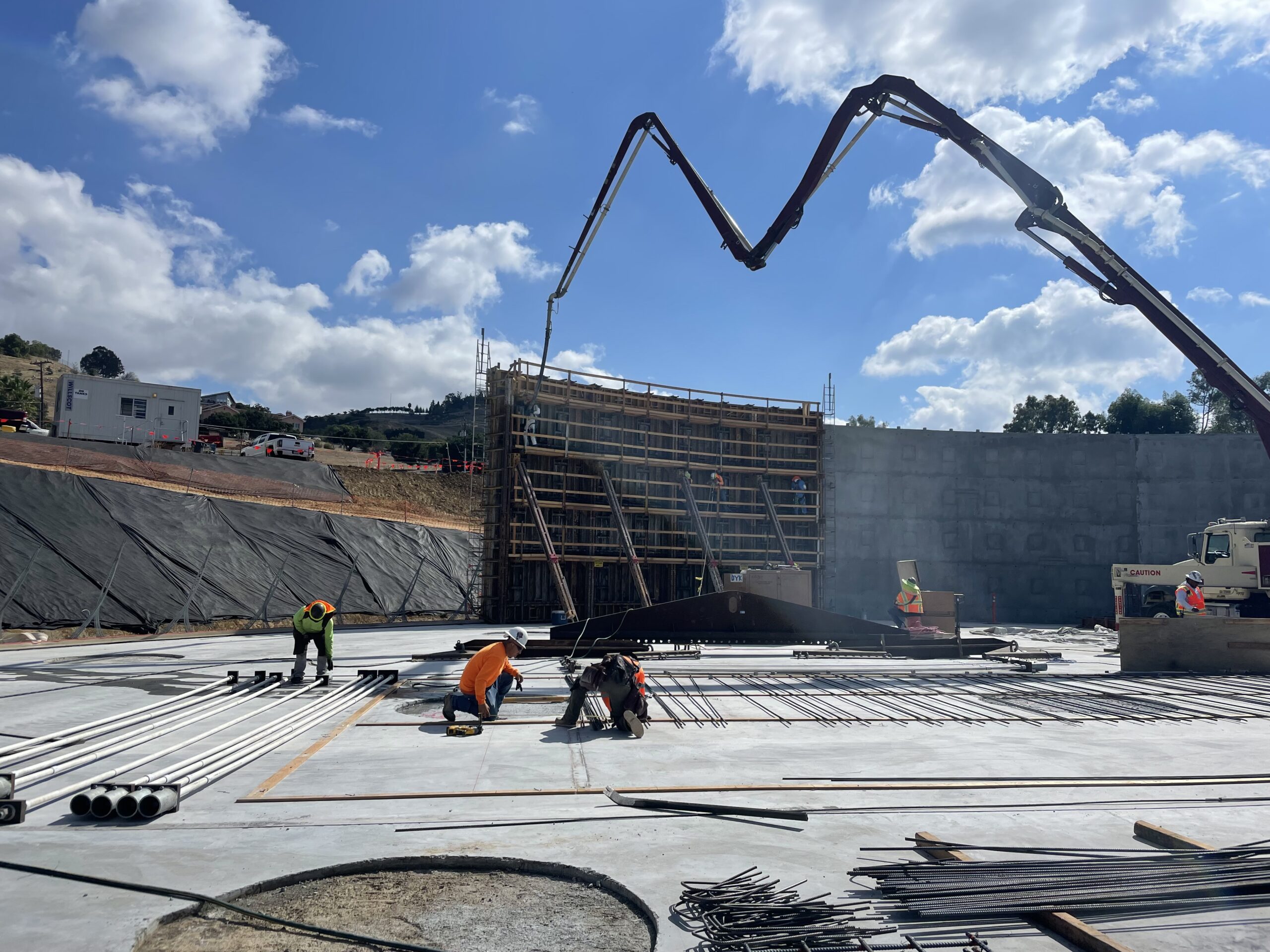
Key Water Infrastructure Projects Across California
Similar to how a person’s quality of life depends on taking care of their health, the health of our infrastructure also depends on investment.
Infrastructure is the backbone of high-quality water systems in California. Protecting and incentivizing infrastructure investment is essential to improving water quality and increasing reliability while reducing health and safety risks within our communities.
As climate change makes drought, wildfires, and other disasters become more common, CWA member utilities must do more to meet Californians’ everyday and emergency needs.
That’s why, over the last six years, California’s eight largest CPUC-regulated water utilities collectively invested over $1 billion per year on scores of infrastructure improvement projects across the state. Projects like these generate hundreds of millions of dollars in economic impact, create thousands of jobs, and allow California customers to continue enjoying safe and reliable water service.
Here are six examples of key projects across the state.
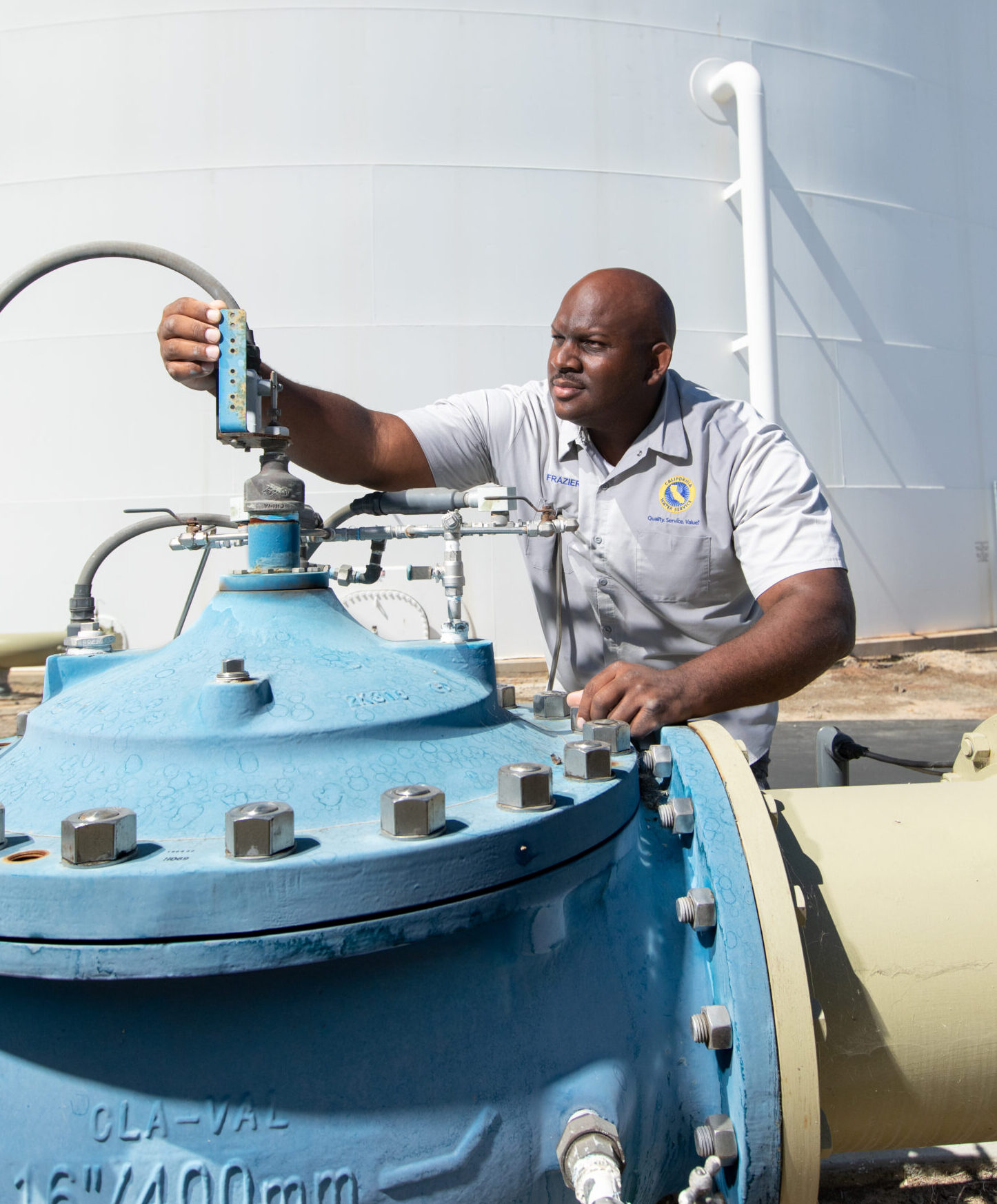
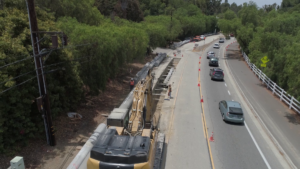 California’s aging water infrastructure has led to a growing need for pipeline replacement. Increased demand, pressure, and the age of the system can cause leaks, breaks, or reduced water pressure. Pipeline replacement is necessary to prevent service interruptions, water loss, property damage, and water quality issues.
California’s aging water infrastructure has led to a growing need for pipeline replacement. Increased demand, pressure, and the age of the system can cause leaks, breaks, or reduced water pressure. Pipeline replacement is necessary to prevent service interruptions, water loss, property damage, and water quality issues.
California Water Service (Cal Water) invests millions per year on major pipeline replacement projects. In June 2018, Cal Water began their Palos Verdes (PV) Peninsula Water Reliability Project, which replaced and reinstalled seven miles of water pipeline to improve drinking water service for the residents and businesses on the Palos Verdes Peninsula. One 60-year-old pipeline was dangerously close to homes and served most of the PV Peninsula. It had a single pumping mechanism to circulate water in the area’s hilly terrain. The project identified this as a risk factor for potential water disruption and elected to add a second pipeline. Together, the two pipelines now deliver clean, safe drinking water to 90% to the PV Peninsula.
This much-needed upgrade to California’s water infrastructure preserves the quality of life for local communities. This project significantly reduces the risk of prolonged outages caused by an aging infrastructure, ensuring the state is better prepared for the future.
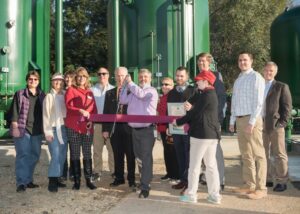 California American Water (Cal Am) is deeply committed to protecting public health and delivering safe, clean and reliable water to our customers. In 2014, the company started testing its groundwater supply wells for perfluoroalkyl and polyfluoroalkyl substances (PFAS), an emerging class of contaminants. PFAS are manufactured chemicals used in many household products including nonstick cookware (e.g., Teflon™), stain repellants (e.g., Scotchgard™), and waterproofing (e.g., GORE-TEX™). They are also used in industrial applications such as in firefighting foams and electronics production. There are thousands of PFAS chemicals, and they persist in the environment. The most well-known are perfluorooctanoic acid (PFOA) and perfluorooctane sulfonic acid (PFOS). There are thousands of PFAS chemicals that persist in the environment. Common sources that could contaminate groundwater include fire training/fire response sites, electronics manufacturing, industrial facilities, and landfills.
California American Water (Cal Am) is deeply committed to protecting public health and delivering safe, clean and reliable water to our customers. In 2014, the company started testing its groundwater supply wells for perfluoroalkyl and polyfluoroalkyl substances (PFAS), an emerging class of contaminants. PFAS are manufactured chemicals used in many household products including nonstick cookware (e.g., Teflon™), stain repellants (e.g., Scotchgard™), and waterproofing (e.g., GORE-TEX™). They are also used in industrial applications such as in firefighting foams and electronics production. There are thousands of PFAS chemicals, and they persist in the environment. The most well-known are perfluorooctanoic acid (PFOA) and perfluorooctane sulfonic acid (PFOS). There are thousands of PFAS chemicals that persist in the environment. Common sources that could contaminate groundwater include fire training/fire response sites, electronics manufacturing, industrial facilities, and landfills.
The Nut Plains Well in Sacramento, CA is an important source of water for Cal Am’s Suburban-Rosemont system. During a routine testing operation, Cal Am detected levels between 160 and 210 parts per trillion (ppt). In response, Cal Am shut down the well and applied for grant funding in July 2016 to address the contaminants. In March 2017, Cal Am received the notice to proceed on construction of a treatment plant to remove PFAS. Four months later, Cal Am was informed that the state denied grant funding due to the lack of state guidance on PFAS. Nevertheless, Cal Am made the decision to continue with the construction to address the issue quickly for its customers. In September 2017, Cal Am completed construction of its new $1.3 million granular activated carbon treatment system to remove PFAS from the water supply and remains in operation.
The treatment system installed by Cal Am successfully removes PFAS from the water supply. Testing shows no detectable levels of PFAS class chemicals when the treated water leaves the plant, meaning the water quality from the new wells has been tested and is free of PFAS.
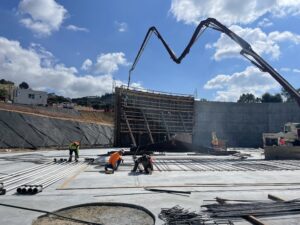
California is one of the most earthquake-prone states in the county. Strong earthquakes can cause damage to critical water infrastructure, leading to serious property damage, flooding, illness, environmental pollution, and water shortages. Earthquake-proofing is key to reducing these adverse impacts and ensuring the delivery of safe, reliable water.
San Jose Water (SJW) has invested millions of dollars to earthquake-proof tanks and reservoirs over the past 15 years. The company works to replace pipelines that cross major fault lines with special earthquake-resistant piping (i.e., Old Santa Cruz Highway). These projects are not only costly, but they are also complex. For example, piping from the Lenihan Dam, adjacent to Lexington Reservoir, and two dams at Lake Ranch were replaced by a siphon piping system around the dams. In the event an earthquake severs the pipes, the siphon will break and stop the water from flowing, preventing the water from washing out the dams.
In addition to these upgrades, SJW’s Columbine Station Improvement Project is replacing the original 20-million-gallon steel water storage tank with two 5-million-gallon pre-stressed concrete water storage tanks. The prestressed tanks are constructed to place the steel components in tension and the concrete in compression. This method provides better seismic resistance and tends to extend the life and reliability of the tanks.
Access to water is our lifeline when disaster strikes. When tanks and reservoirs are fitted with proper seismic design, they are better able to withstand an earthquake and continue to function after a catastrophic event. Investing in earthquake resistance protects critical water infrastructure assets and secures a reliable water supply for communities across California.
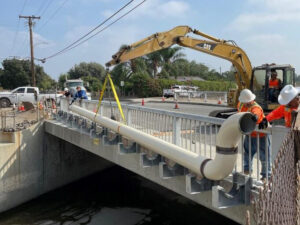 Historically, inadequate water infrastructure has had a significant impact on low-income areas and communities of color. Prioritizing water infrastructure improvements in disadvantaged communities is important for ensuring access to safe and clean water, addressing environmental justice, building disaster resilience, and promoting economic development, equity, and social justice.
Historically, inadequate water infrastructure has had a significant impact on low-income areas and communities of color. Prioritizing water infrastructure improvements in disadvantaged communities is important for ensuring access to safe and clean water, addressing environmental justice, building disaster resilience, and promoting economic development, equity, and social justice.
In 2022, Suburban Water Systems invested $13.5M in pipeline replacement projects. One such project involved the installation of a new 12-inch diameter steel pipe in the city of West Covina on the bridge crossing the Walnut Creek Channel at Willow Avenue. The preexisting waterline, which served a community where many lived below the poverty line, was abandoned in 2014 due to leakage and could not be repaired as it was located beneath an existing concrete flood control channel. Critical customers, including healthcare/public health facilities, emergency services, public schools, and the Westfield West Covina Mall, were located in the impacted area.
To work safely over the channel, custom-designed and fabricated pipe supports were attached to the side of the bridge. The contractor used a trailer-mounted personnel basket (Bridgewalker Type II) to install the supports, replacing the leaky pipe and reestablishing safe water supplies.
Overall, Suburban Water Systems’ investment in pipeline replacement projects highlights its commitment to providing reliable and safe water services to its customers and those who need it the most.
Climate change and population growth exacerbate California’s fire season and wildfire conditions. Adequate fire hydrant maintenance and improvements provide firefighters with reliable and accessible sources of water to control and extinguish fires.
Liberty prioritizes the safety of its customers and communities. For example, Liberty regularly invests in reliable fire hydrants to support firefighting and has upgraded, replaced, or added approximately 270 hydrants since 2019. As of 2022, Liberty has 1,964 hydrants throughout their service territory in southeast Los Angeles County. Fire hydrants are inspected to confirm they work properly and when necessary, hydrants are replaced or upgraded. Funding for hydrant maintenance is a regular request in Liberty’s general rate case, as it is one of many important parts of California’s water infrastructure.
To fulfill its commitment to water quality and reliable service, Golden State Water Company (GSWC) is upgrading the treatment and delivery of water to create sustainable, long-term value for customers throughout its service areas. Proactive capital investments to replace and protect our water infrastructure system avoids the costly, and sometimes dangerous, effects of deferring maintenance or delaying the replacement of aged infrastructure.
A project highlighting GSWC’s commitment is the recently constructed Linda Vista water storage tank, a 600,000-gallon welded steel tank within the Barstow Water System. The welded steel tank will improve water service and enhance water storage availability for firefighting and responding to system emergencies.
GSWC has invested more than half a billion dollars in water infrastructure projects over the past five years (2018-22), benefiting more than 1 million customers throughout 10 counties in Northern, Coastal and Southern California.
Representing Regulated Water Utilities in California
Water-industry infrastructure includes the various components that pump, divert, transport, store, treat, and deliver safe drinking water.
These may consist of groundwater wells, surface-water intakes, dams, reservoirs, aqueducts, storage tanks, treatment facilities, and pipes. To meet increasingly stringent regulatory standards, many water systems require improved technologies and upgraded infrastructure.

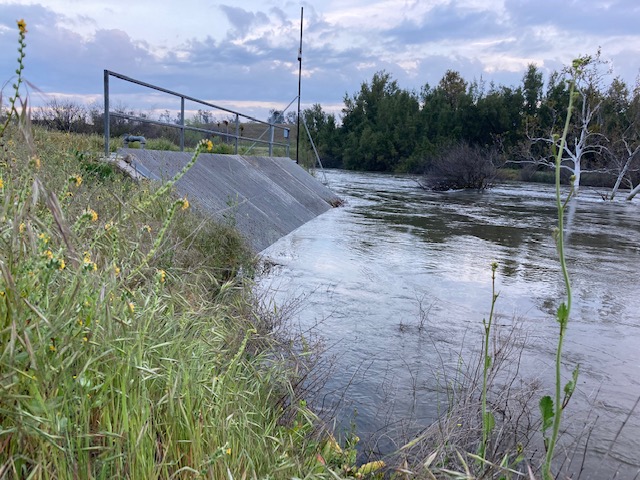

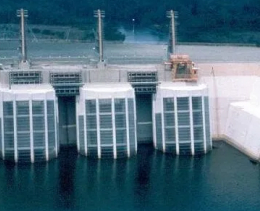
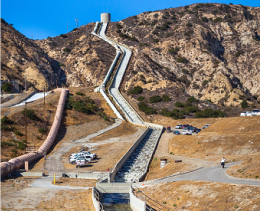

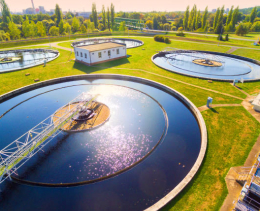
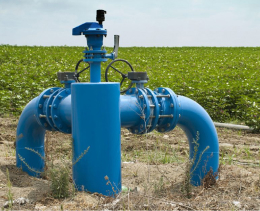
Infrastructure Over The Next 20 Years
According to the American Society of Civil Engineers’ 2013 Report Card for America’s Infrastructure, California reported $44.5 billion in drinking water infrastructure needs and $29.9 billion in wastewater infrastructure needs during the next 20 years.



